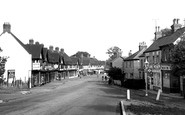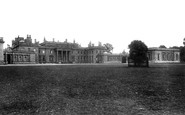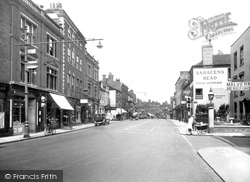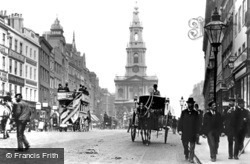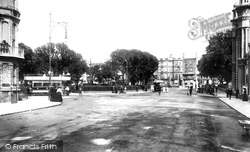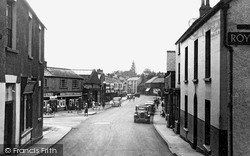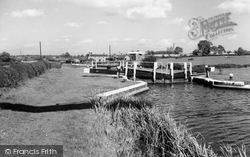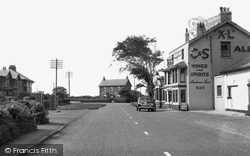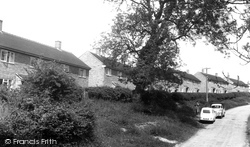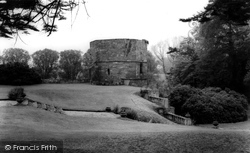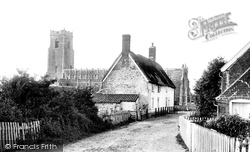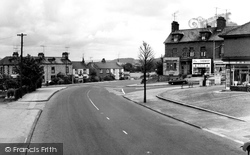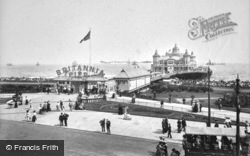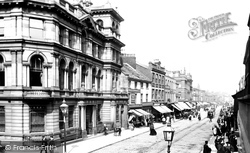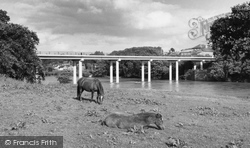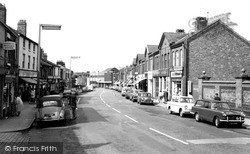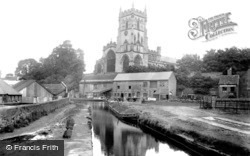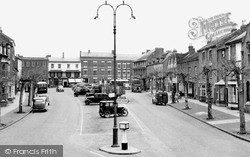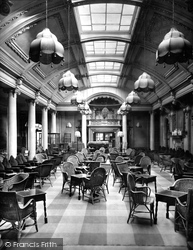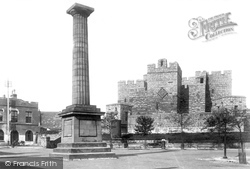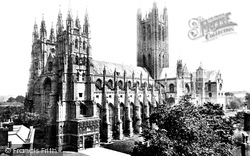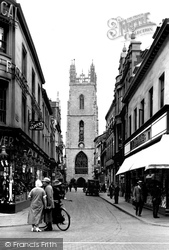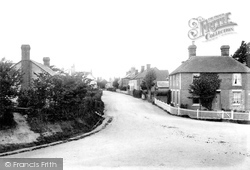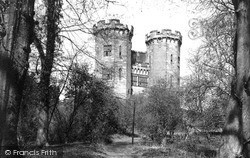Places
1 places found.
Those places high-lighted have photos. All locations may have maps, books and memories.
Photos
Sorry, no photos were found that related to your search.
Maps
22 maps found.
Books
1 books found. Showing results 217 to 1.
Memories
421 memories found. Showing results 91 to 100.
The Awakening
On the right of the photograph the second shop belonged to Arthur Sansom, the Newsagents and Confectioners. It has a sign board above the shop front: PICTURE POST. In the Easter holidays of 1959 at the age of 14½, I took my first ...Read more
A memory of Locksbottom
60's Clubs,Dance Venues And Coffee Bars In And Around Welling
During the 1960's many venues opened in and around Welling to cater for a growing music and dance culture. Teddy-boys and Rockers had frequented the Embassy Ballroom, but when Mod became ...Read more
A memory of Welling by
Growing Up In A Community
my parents moved to Sussex Crescent in 1954 with three young children, having been re homed from temporary housing - a prefab. The Northolt estate was a great place with a genuine community spirit, families all rallied ...Read more
A memory of Northolt by
Belgians In Birtley.
Few people are aware of the part Birtley, Tyne Wear, (part of County Durham in those days ) played in the Great War of 1914 - 1918. Belgium in 1914 was occupied by the German Army, and thousands of refugees fled to Britain where ...Read more
A memory of Birtley by
My Golden Years At Stokes Bay
I was born in Gosport in 1929, my father was a long serving seaman in the Royal Navy and so our family life was all things navy - so Stokes Bay was a big part of our lives. I had three elder sisters who were ...Read more
A memory of Stokes Bay by
The Pike
Many years ago in the late 1960s there was a stretch of canal down by old Royston. The local fishing club would spend hundreds of pounds on replenishing the fishing stocks with rainbow trout - the only problem with this idea was ...Read more
A memory of Royston by
Walton Colliery
My name is Roland Mitchell. I worked at Walton colliery as a haulage hand. I worked alongside Percy Heckles, Alan Jennings, Phillip Casgoin and Phillip Redmond and a young lad by the name of George Bernard Shaw. ...Read more
A memory of Walton in 1971 by
The Wrong Guy
There at the time when Cawthorne was a tour operator and whether it was coincidence or not the tour operator was called Harry Cawthorne coach tours. I do believe that they were an established firm; it could well be that the village ...Read more
A memory of Gawber in 1952 by
The Ghost
My dad, even though married he was one for playing the field. Mother was taking care of my brother's kids (his wife had died, he was a Flight Sargent), Mother was miles away and Dad played about. One afternoon he had picked up ...Read more
A memory of Royston by
During The War 1942
During the summer of 1942 my uncle who was an American soldier lived in several place in the Savernake Forest and eventually was billeted in "the big house" (Tottenham House)and kept a wonderful journal. I will cut and ...Read more
A memory of Savernake Forest in 1942 by
Captions
469 captions found. Showing results 217 to 240.
The Tything is the northern continuation of Foregate Street and ribbon development began here centuries ago.
In 1900 work began on clearing the slums behind the buildings on the left to create the Aldwych. In the middle on its island site is St Mary-le-Strand Church, which was built in 1717.
The trams began operation the year before this picture was taken, with the Old Steine as their main terminus.
The Austin van facing the camera on the left is parked outside the old Red & White coach station, and no doubt local people of ripening years will recall family holidays that began and ended at this
Blakeney only really began to become popular as a tourist and holiday destination from the mid 1920s.
The Union Canal Bill was approved by Parliament in 1793, and work began in 1794, reaching Fleckney in 1796.
It began as an alehouse. The present building dates from 1760, but there have been additions; the bay windows, for example, were put in around my mother's birthday in October 1888.
At about this time, Rutland villages began to acquire small housing estates, usually on the edges. At first they were council houses, and later private developers came in.
In 1695 Bishop Lloyd began rebuilding the castle, and it continued as a residence until the death of Bishop Lonsdale in 1867.
Physical decline of the church's fabric began as early as the 16th century and accelerated through periods of poverty, damage and indifference.
If we turn left at the junction and cross the railway line, we find ourselves on the shore, from where stagecoaches began their dangerous crossing of the bay to Lonsdale North of the Sands.
Many seaside piers began life as landing stages for pleasure steamers. Thrusting out into the sea they encapsulated the Victorian passion for exotic feats of engineering.
The track along the centre of the street was for horse-drawn trams, which began operating in 1880.
This began in 1961 when Richard Booth opened his first second-hand bookshop. The town's annual Hay Festival is now internationally famous with the literati.
Stockton Heath began to develop as a Warrington suburb with the coming of the tram in 1905. This view towards the Ship Canal shows London Road free of today's endless stream of traffic.
The carpet industry began here in the 1700s, when a Mr Pearsall built the first factory for their production.
Pershore's Fair began in the reign of Henry III to provide funds for the restoration of the presbytery. It was held in the churchyard until the mid 1800s.
It was a big undertaking to flatten such a pile, but work began on 3 January 1975.
With his death began nearly seventy years of Scottish rule until the island was taken by Edward III of England.
It was also a period when wire shrouds began to replace thick hemp.
The cathedral was rebuilt in the 12th century, when it began to assume the form in which we see it today.
Welsh Sports Ltd began its long tenure in the street during this period. Those seeking other recreational pursuits could choose either the Old Dolphin or Old Arcade hostelries.
Sir Edward Goschen was British Ambassador in Berlin in 1914 when the war began. Seacox Park has a magnificent collection of trees and shrubs.
In the early 19th century rebuilding began, but the project was abandoned before completion.
Places (1)
Photos (0)
Memories (421)
Books (1)
Maps (22)

